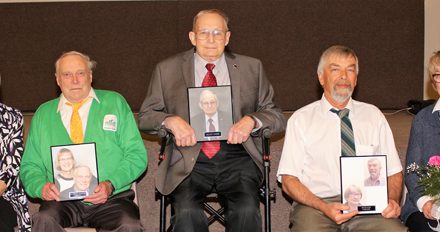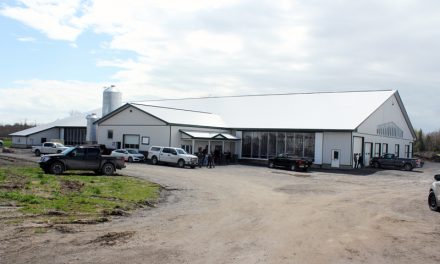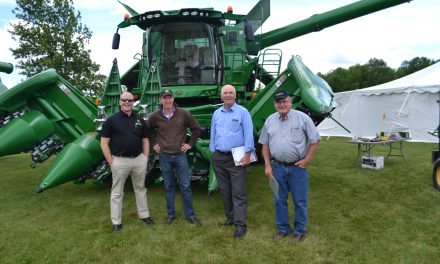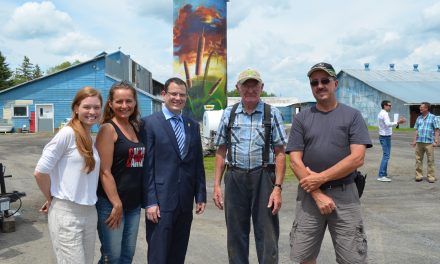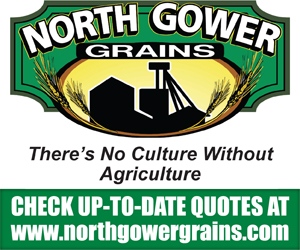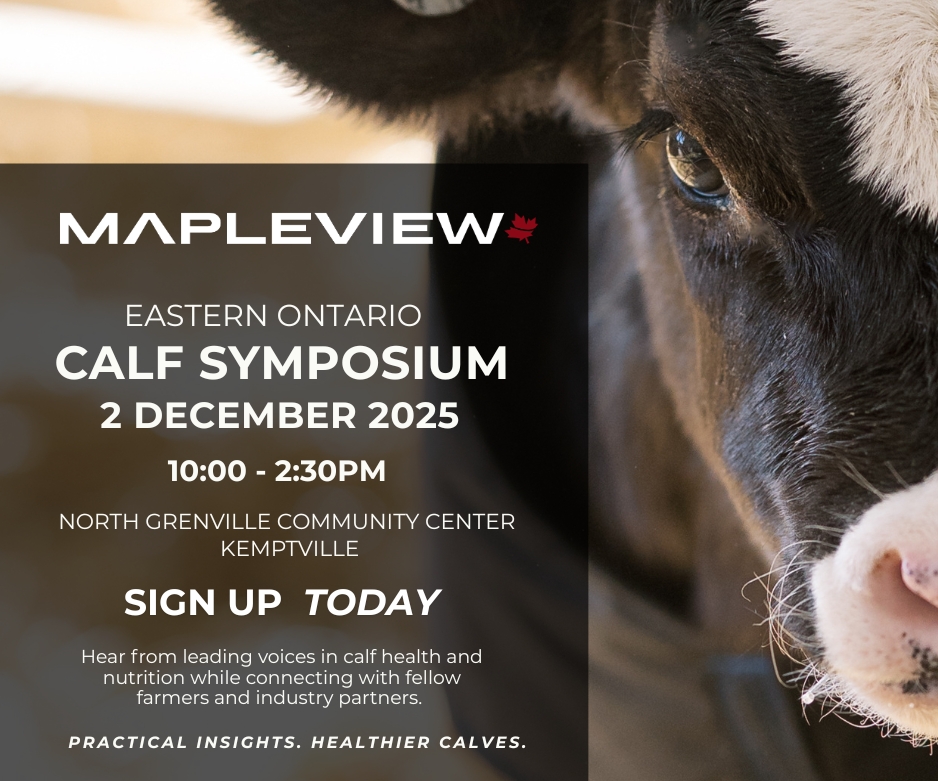New inductees
New Canadian Agricultural Hall of Famers Robynne Andersen (left) and Jean Szkotnicki (right) were two of the three women inducted into the CAHF on Nov. 30 in Calgary. The women were pictured alongside their portraits which were to be displayed at the Royal Agricultural Winter Fair. Courtesy CAHF photos
by Kalynn Sawyer Helmer
AgriNews Staff Writer
CALGARY – The Canadian Agricultural Hall of Fame held the special awards banquet in Calgary this year on Nov. 30. The historic evening saw the induction of three Canadian women: Robynne Andersen, Jean Szkotnicki and Patty Jones. This marks the first time in 50 years that the CAHF has inducted a woman, and of the 210 inductees only five of those are women.
Robynne Andersen
Robynne Andersen’s involvement with agriculture began from day one. She grew up on a family farm but had not planned on staying in the field. She studied history and aspired to historical academia.
Early in her career, Andersen had the opportunity to work in the office of the Deputy Prime Minister, who became the agricultural minister. “I realized that what I understood about farming, which seemed like not enough… but in reality I understood the crops, the production cycles and that maybe the people who were making agricultural policy did not. That to me was very pause worthy and was really the genesis of my first company,” she said.
That first company was called Issues Ink, a consulting firm, and was owned by Andersen from 1990 to 2007. Three years later in 2010 Andersen founded her current company Emerging Ag, an agricultural consulting firm, and she also sits on Bioenterprise’s Board of Directors. “Supporting innovation in agriculture has been a core part of my career. Being engaged in Bioenterprise has given me the chance to see the frontlines of how many creative ideas there are in the agricultural sector and to revel in the ability of young inventors and entrepreneurs who think of new ways to add value to Canadian agriculture,” she explained.
Currently with Emerging Ag, Andersen does a lot of work on behalf of the agricultural sector. “We have the chance to do quite a lot of engagement around the ways in which the international community is talking about agriculture. Right now, the United Nations Environment Assembly is meeting in Nairobi and the report that the United Nations program put out on agriculture was pretty unkind. I would like to see us find ways to talk about agriculture in a more constructive manner, and also to question some of these so-called facts that have begun to be reported. I think we need to ask ourselves where they are coming from and really examine whether some of these charges being laid against the sector are indeed, well-founded,” said Andersen.
Fighting for agriculture’s voice is what Andersen intends to continue doing. “I think the most important thing is that we have to be there. When people listen to farmers they are really struck by how hard their jobs are and all of the variables that are involved. If we are not present and we leave the space to others to describe what farming is, they talk about it as chemical pollution, manure leading to E. coli and all of these negative stereotypes, that aren’t founded in the reality of stewarding land in the manner in which we are actually doing it. That is my biggest admonition, we all need to do a better job of getting out and being present in these fora and also to do a better job of looking after each other. Agriculture has more in common than they have apart. Those small differences that we see in our daily lives, are tiny compared to the challenges that we collectively face,” insisted Andersen.
With such passion for agriculture and the future of the sector, it is not hard to imagine why Andersen’s colleagues and peers nominated her for the CAHF. The induction gave her a deep sense of honour and privilege and she remarked how special it was to have three women inducted. “It was a really exciting moment, our time has come, ladies. For all of the history of Canadian agriculture women have been the backbone of the sector, but to get women into leadership roles and to think of women to nominate has perhaps been the area where we have not excelled. There are a lot of great women that deserve recognition in Canadian agriculture. So it’s very humbling that I was one of them but I know there are many more to be following me.”
As for the future of women in agriculture, Andersen believes in the choice to seek out opportunities, share experiences and be present on boards. “We need to make sure that women in agriculture are getting a chance to go to the association conferences and places where they build networks. I hope that we will be doing a lot more to make sure that young women are present and once they are, that the opportunities are there,” concluded Andersen.
Jean Szkotnicki
Jean Szkotnicki did not grow up on a family farm, but she loved horses and spent a lot of time at a nearby farm working and learning about the horses and the crops that fed them. She graduated from the University of Guelph in animal and food science and got her Master’s in meat science. She got her start with the Ontario Cattlemen’s Association.
A few years later, Szkotnicki threw her hat into the ring for a newly created position as the Executive Director for the Canadian Animal Health Institute. An organization that before her, was volunteer based and employed one part-time staff. For over 25 years, Szkotnicki has led the CAHI and been an advocate and leader in her work for the health of animals and people.
“We deal with issues in a way where we put the competitive interests aside and do things for the betterment of the whole industry and that is just a super experience. I think it really is an institute now where we are looked upon and asked by government to provide input to policy and regulation, we’re able to work very closely together as companies in a very competitive world and unlike most other pharmaceutical organizations around the world, we also represent both the innovative companies and the generic companies. We represent about 95 per cent of product sales in this country, so it is a real statement to the fact that we are a body that has become the voice of the animal health industry,” said Szkotnicki.
During her career, Szkotnicki has had many highlights, but a few stand out above the rest. She recalled one in particular when she was the co-chair of the Business Coalition on cost recovery, a federal initiative to introduce user fees for the services that government provides. “It was on a wide basis, way beyond agriculture. It was the work of some of the examples that we had on the veterinary drug side of the industry that I had prepared that had actually helped to champion support for a private member’s bill. It brought accountability to the process and transparency to the setting of fees and the delivery of services in a timely manner,” she explained. That bill passed unanimously and is the only private member’s bill with an economic impact, that has ever passed through parliament. “It was a lot of hard work but a real benefit to a lot of Canadian agriculture,” she said.
These days, Szkotnicki is looking to the discussion on antimicrobials. “We’ve had real influences where we are seen as part of the solution and we are engaged in the conversation from a pharmaceutical aspect with our producer groups, veterinarians, academia and regulators,” she explained. That discussion is important now since there are 340 products which will be changed from over-the-counter to prescription status. This will have a big impact on the distribution of drugs and give them veterinary oversight. “We are in the transition phase. It will happen Dec. 1, 2018, but it’s really good to see how we are working so hard together and sharing ideas and collaborating so well,” said Szkotnicki.
Collaboration is the key to agriculture’s future, according to Szkotnicki, and the role of women will only grow over time. “I think what women bring to the table is the fact that we tend to be more collaborative. I see where we are in a world that deals with issues in a horizontal basis, where nobody is the boss but we have to work together and I think women are very good at that. As we move forward, we have to deal more with public relations and consumer ideas and I think women have a better understanding of what people are dealing with, the fear of the unknown and what that means and trying to communicate what we do in agriculture, why we do it and building those relationships,” she said.
Her own inspiring work as a woman in agriculture made her an easy choice for the CAHF. “It is very humbling and heartwarming, yet so rewarding to be recognized for the work that you have done and are doing,” she said. “Some of my mentors are in the Hall of Fame. People like Charles Gracey and Byron Beeler. To be thought of in league with the like of those people is just wonderful. I think the Hall of Fame Board had made a real statement about the intelligence of women, the energy and hard work that we provide as well as the collaborative skill set that we bring to agriculture. By naming three women in one year they had really made a statement and I predicted that it would happen again and again that women will be nominated, and I truly believe that.”
To read Patty Jones’ story, see the February issue of AgriNews.



